Oral Hygiene Cumming
The Key to Healthy Smiles
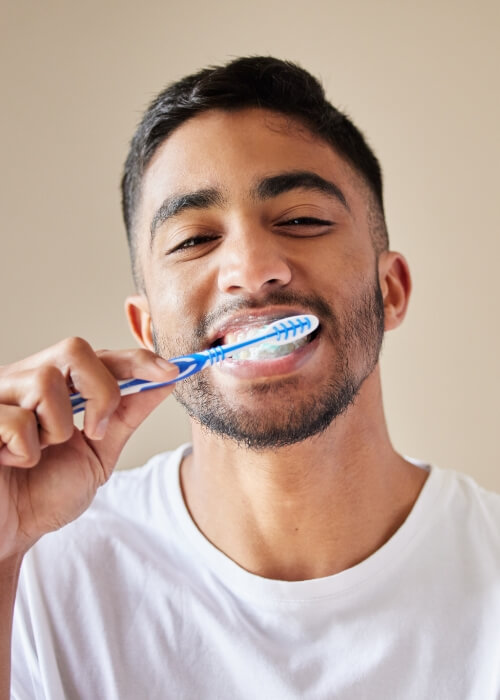
Maintaining a good at-home dental hygiene routine can help prevent cavities, gum disease, and other common oral health concerns from developing. While they can sometimes still occur due to tartar accumulation in hard-to-reach areas of the mouth, brushing and flossing can mitigate the damage they can cause, helping you avoid costly dental bills and emergency situations. Learn more about best practices for caring for your smile below, and never hesitate to ask our team for more information about proper oral hygiene in Cumming!
Why Choose Bragg Dental for Oral Hygiene?
- See the Same Dentists Every Time
- Focused on Patient Education
- Conservative Approach to Care
Why Is Oral Hygiene So Important?

The best way to prevent cavities and periodontal disease is by good tooth brushing and flossing techniques, performed daily. Periodontal (gum) disease and decay are both caused by bacterial plaque. Plaque is a colorless film, which sticks to your teeth at the gum line, and it’s constantly forming. By thorough daily brushing and flossing you can remove these germs and help prevent periodontal disease.
How to Brush Teeth
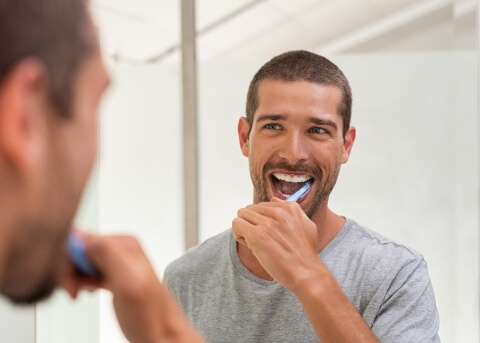
If you have any pain while brushing your teeth or have any questions about how to brush properly, please be sure to call our dental office.
Dr. Bragg and Dr. McTier recommend using a soft-bristled toothbrush. Position the brush at a 45-degree angle where your gums and teeth meet. Gently move the brush in a circular motion several times using small, gentle strokes brushing the outside surfaces of your teeth. Use light pressure while putting the bristles between the teeth, but not so much pressure that you feel any discomfort.
When you are done cleaning the outside surfaces of all your teeth, follow the same directions while cleaning the inside of the back teeth.
To clean the inside surfaces of the upper and lower front teeth, hold the brush vertically. Make several gentle back-and-forth strokes over each tooth. Don’t forget to gently brush the surrounding gum tissue.
Next you will clean the biting surfaces of your teeth by using short, gentle strokes. Change the position of the brush as often as necessary to reach and clean all surfaces. Try to watch yourself in the mirror to make sure you clean each surface. After you are done, rinse vigorously to remove any plaque you might have loosened while brushing.
How to Floss
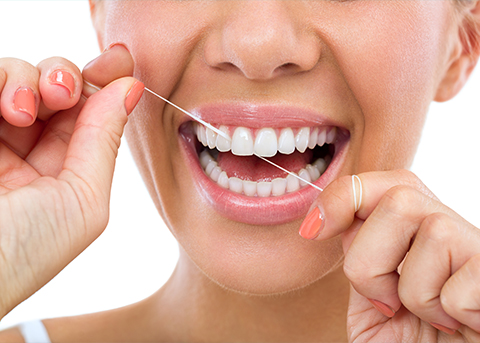
Gum disease usually appears between the teeth where your toothbrush cannot reach. Flossing is a very effective way to remove plaque from those surfaces. However, it is important to develop the proper technique. The following instructions will help you but remember, it takes time and practice to get great at it.
Start with a piece of floss (waxed is easier) about 18” long. Lightly wrap most of the floss around the middle finger of one hand. Wrap the rest of the floss around the middle finger of the other hand.
To clean the upper teeth, hold the floss tightly between the thumb and forefinger of each hand. Gently insert the floss tightly between the teeth using a back-and-forth motion. Do not force the floss or try to snap it in to place. Bring the floss to the gum line then curve it into a C-shape against one tooth. Slide it into the space between the gum and the tooth until you feel light resistance. Move the floss up and down on the side of one tooth. Remember there are two tooth surfaces that need to be cleaned in each space. Continue to floss each side of all the upper teeth. Be careful not to cut the gum tissue between the teeth. As the floss becomes soiled, turn from one finger to the other to get a fresh section.
To clean between the bottom teeth, guide the floss using the forefingers of both hands. Do not forget the back side of the last tooth on both sides, upper and lower.
When you are done, rinse vigorously with water to remove plaque and food particles. Do not be alarmed if during the first week of flossing your gums bleed or are a little sore. If your gums hurt while flossing, you could be doing it too hard or pinching the gum. As you floss daily and remove the plaque, your gums will heal and the bleeding should stop.
Caring for Sensitive Teeth
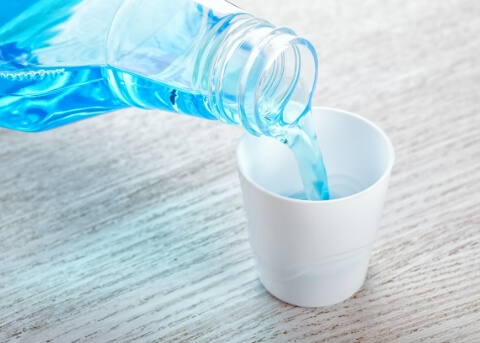
Sometimes after dental treatment, teeth are sensitive to hot and cold. This should not last long, but only if the mouth is kept clean. If the mouth is not kept clean the sensitivity will remain and could become more severe. If your teeth are especially sensitive, consult with your doctor. They may recommend a medicated toothpaste or mouth rinse made especially for sensitive teeth.
Choosing Oral Hygiene Products
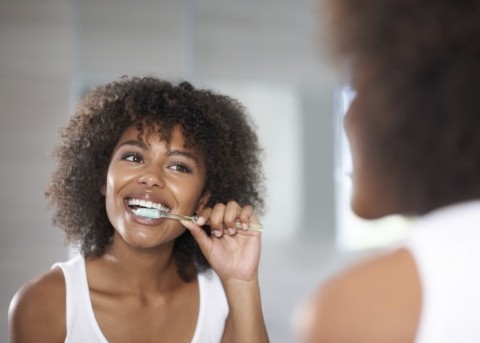
There are so many products on the market that it can be difficult choosing between all of them. Here are some suggestions for choosing dental care products that will work for most patients.
Automatic and “high-tech” electronic toothbrushes are safe and effective for the majority of patients. Oral irrigators (water spraying devices) will rinse your mouth thoroughly but will not remove plaque. You need to brush and floss in conjunction with the irrigator. We see excellent results with electric toothbrushes like Rotadent and Interplak.
Some toothbrushes have a rubber tip on the handle, this is used to massage the gums after brushing. There are also tiny brushes (interproximal toothbrushes) that clean between your teeth. If these are used improperly you could injure the gums, so discuss proper use with your dentist.
Fluoride toothpastes and mouth rinses, if used in conjunction with brushing and flossing, can reduce tooth decay by as much as 40%. Remember, these rinses are not recommended for children under six years of age. Tartar control toothpastes will reduce tartar above the gum line, but gum disease starts below the gum line, so these products have not been proven to reduce the early stage of gum disease.
Anti-plaque rinses, approved by the American Dental Association, contain agents that may help bring early gum disease under control. Use these in conjunction with brushing and flossing.
